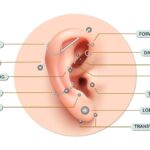If you’ve ever wondered, “What does a cavity look like?” you’re not alone. Dental cavities, also known as caries or tooth decay, are a common issue affecting people of all ages. Recognizing what a cavity looks like can help you detect it early and seek treatment before it becomes more serious. In this guide, we’ll explore what cavities look like, how they form, their signs and symptoms, and how to prevent and treat them.
What Does a Cavity Look Like?
A cavity is essentially a hole that forms in your tooth due to decay. The appearance of a cavity can vary depending on its location and how advanced it is. Here’s a general overview of what a cavity looks like:
1. Early Stages
In the early stages, a cavity might not be easily visible. The tooth may have some white spots or areas of demineralization. These spots occur when the enamel starts to lose minerals, which is a precursor to cavity formation.
2. Advanced Stages
As the cavity progresses, it becomes more noticeable. You might see:
- Brown or Black Spots: These are common as the decay progresses. The tooth surface may develop darker areas that indicate damage.
- Holes or Pits: As decay continues, you might see small holes or pits in the tooth. These are more visible in areas where the enamel has been significantly eroded.
- Discoloration: The affected tooth may appear darker or more discolored compared to the surrounding teeth.
How Do Cavities Form?
Understanding how cavities form helps in recognizing what they look like and how to prevent them. Cavities are caused by the demineralization of tooth enamel due to acid produced by bacteria. Here’s how the process works:
1. Plaque Formation
Plaque is a soft, sticky film of bacteria that forms on your teeth. When you eat foods high in sugar or starch, the bacteria in plaque produce acids that attack the tooth enamel.
2. Acid Attack
The acids produced by bacteria begin to dissolve the minerals in the enamel, causing it to weaken. This process is called demineralization.
3. Cavity Formation
If the acid attack continues, the enamel becomes severely weakened, leading to the formation of a cavity. The decay can progress deeper into the tooth if not treated, eventually reaching the dentin and pulp.
Signs and Symptoms of a Cavity
Detecting cavities early can prevent more severe damage. Here are common signs and symptoms to watch for:
1. Tooth Sensitivity
You might experience sensitivity to hot, cold, or sweet foods and drinks. This occurs when the enamel is worn down, exposing the sensitive dentin.
2. Toothache
A persistent toothache, especially one that gets worse over time, can be a sign of a cavity. The pain may range from mild discomfort to severe, sharp pain.
3. Visible Holes or Pits
As mentioned, cavities can create visible holes or pits in the teeth. These may be more noticeable when you inspect your teeth closely or during a dental exam.
4. Discoloration
Look for dark spots or areas of discoloration on your teeth. These changes in color can indicate that a cavity is present.
5. Bad Breath
Persistent bad breath, also known as halitosis, can be a sign of tooth decay. The bacteria responsible for cavities can contribute to unpleasant odors.

How to Prevent Cavities
Preventing cavities is crucial for maintaining good dental health. Here are some effective strategies:
1. Maintain Good Oral Hygiene
- Brush Regularly: Brush your teeth at least twice a day with fluoride toothpaste to remove plaque and prevent decay.
- Floss Daily: Flossing helps remove food particles and plaque from between your teeth and under the gumline.
2. Use Fluoride
Fluoride helps strengthen tooth enamel and makes it more resistant to acid attacks. Use fluoride toothpaste and consider fluoride treatments if recommended by your dentist.
3. Limit Sugary Foods and Drinks
Reduce your intake of sugary and starchy foods, as they can contribute to plaque formation and acid production.
4. Visit Your Dentist Regularly
Regular dental check-ups and cleanings can help detect and address cavities before they become severe. Your dentist can also provide professional cleanings to remove plaque and tartar.
5. Consider Dental Sealants
Dental sealants are protective coatings applied to the chewing surfaces of your back teeth. They help protect against cavities by sealing out plaque and food particles.
Treatment Options for Cavities
If a cavity has formed, it’s important to seek treatment promptly. Here are common treatment options:
1. Fillings
Fillings are used to restore teeth affected by cavities. The decayed portion of the tooth is removed, and the cavity is filled with a material such as composite resin, amalgam, or gold.
2. Crowns
For more extensive decay, a crown may be necessary. A crown covers the entire tooth to restore its shape, size, and function.
3. Root Canals
If the decay has reached the tooth’s pulp, a root canal may be needed. This procedure involves removing the infected pulp and sealing the tooth to prevent further infection.
4. Preventive Treatments
In addition to fillings and crowns, your dentist may recommend fluoride treatments or sealants to prevent future cavities.

Conclusion
Understanding “what does a cavity look like” is key to maintaining good dental health and preventing serious tooth damage. By recognizing the signs of cavities early, practicing good oral hygiene, and seeking timely dental care, you can protect your teeth and avoid the complications associated with tooth decay. Regular dental visits and preventive measures are essential for keeping your smile healthy and cavity-free.



